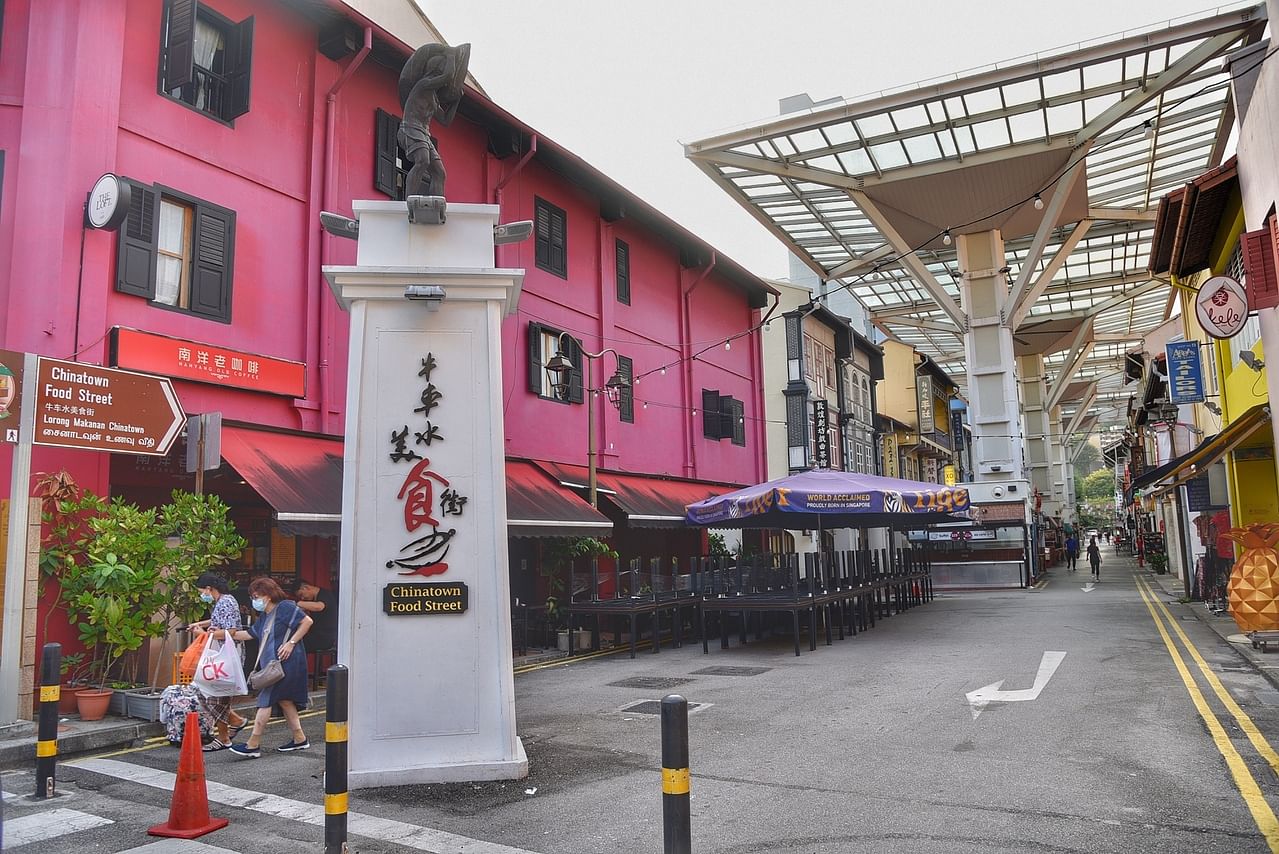SINGAPORE - The Geylang Serai Cultural Precinct aims to be a bustling spot for both the young and old in the Malay community while retaining the traditions of Malay culture, food and identity.
The precinct will see new developments and transformation of existing key landmarks in the coming years.
But the rejuvenation focuses not just on the physical developments but also its cultural programming, said Minister in the Prime Minister's Office Maliki Osman at the launch of the Geylang Serai Trails on Sunday (Dec 12).
"It's about the programming and the history and heritage (of the area), so that Singaporeans can appreciate the unique offerings of Geylang Serai," said Dr Maliki, who is also Second Minister for Education and Foreign Affairs.
"One of our greatest interests is to attract young people to come to Geylang Serai and celebrate the history and rich culture of this place."
Geylang Serai is undergoing a rejuvenation project to strengthen the area's cultural identity and make it a more vibrant place for all visitors.
The cultural precinct stretches from Tanjong Katong Complex to Kampong Ubi Community Centre.
Among the new features is the Anjung @ WGS - "anjung" means "porch" in English. The 1,704 sq m hard court is located beside Wisma Geylang Serai and fronts Geylang and Changi roads.
The space will be used for ceremonial occasions, social meetings and sports activities, and is expected to be completed by mid-2022.
A landmark gateway, an interpretation of the stilts of a Malay kampung house built with modern material, will sit at the junction of Geylang, Changi, Geylang Serai and Joo Chiat roads.
Last Wednesday, the Singapore Land Authority announced that Tanjong Katong Complex will be closed for major renovation works from the second half of 2023.
The complex's 106 occupants, whose tenancies will all expire by Dec 31 next year, will be given a six-month extension to allow them to benefit from the Hari Raya festive period in April 2023.
Built in 1984, the iconic four-storey mall is known for its wide assortment of shops that cater to the Malay community here, and many go there to make purchases for Hari Raya or get items needed for celebrations such as weddings.
Renovation works are expected to begin from August 2023 and are targeted to be completed by July 2026.
Writer Rasiah Halil, who frequents Geylang Serai, said the area and its plethora of malls is the go-to place for the Malay/Muslim community here, especially so during Ramadan.
"It's homely and the traders are friendly. I have been to the malls and shops to buy clothes, books, jewellery, attend weddings, (buy) Malay handicrafts et cetera; buy and repair my watches; and also meet friends for food," said Madam Rasiah, who is the author of a bilingual book titled Geylang Serai: Dalam Terowong Masa (Through The Tunnel Of Time).
"Tanjong Katong Complex, Joo Chiat Complex and the shops on the second level of Geylang Serai Market remind me of our kampung days in a positive way. I like the atmosphere, it's not too touristy," she said.
Madam Rasiah hopes that the kampung spirit will be retained even after the rejuvenation, and that more shops and amenities will be included to attract families and young people.
"Sometimes, we're in a hurry to demolish and then build bigger and newer buildings but they tend to cater more to tourists than locals. We all have memories and we want to see part of the memories remain for a long time," she said.
The rejuvenation of the Geylang Serai Cultural Precinct was first mooted by Prime Minister Lee Hsien Loong in 2018.
Dr Maliki chairs the steering committee for the project, along with lead representations from the People's Association and the Urban Redevelopment Authority, together with other public sector agencies.
Mr Lee Hong Ping, an executive member of Geylang Serai Citizens' Consultative Committee, noted that the area has its roots as a Malay emporium since the 1880s, when it was a bustling trading hub.
"Its importance and significance as a suburban trading hub and Malay cultural centre are second only to (those of) Kampong Glam in the central business district (CBD)," said Mr Lee, the author of Geylang Serai Heritage Trail Book.
For instance, he noted, one of the first electric trams in Singapore in the 1910s ferried residents directly between Geylang Serai and the CBD, with bullock carts being the only other mode of transportation.
"Till today, many Malay residents will still travel all the way from Jurong and Woodlands to the Geylang Serai market and Tanjong Katong Complex to buy the authentic Malay ingredients and spices, traditional costumes, ornaments and handicrafts, because they can only be found there," he noted.
Mr Salleh Marican, 72, founder of Second Chance Properties, said Geylang Serai holds nostalgic memories for many Malays, although the younger generation tends to visit less often than their elders.
"Old malls like Tanjong Katong Complex don't have the fast food chains and supermarkets to compete with the other bigger malls like Parkway Parade, so families and younger people don't come so often unless it's for the festive season. This is why we need to renovate the mall, so more people will come here," he said.
He owns womenswear store First Lady and jewellery store Golden Chance, both long-time tenants in Tanjong Katong Complex.
Said Mr Salleh: "Geylang Serai is a one-stop shop. You can buy everything you need here, so you come back year after year during the festive season. In the past, you used to come with your parents. Now you come back with your children or grandchildren, so it's a very nostalgic place."






